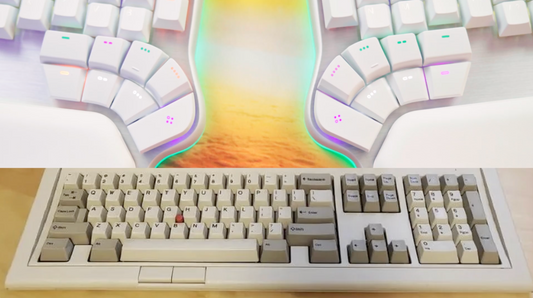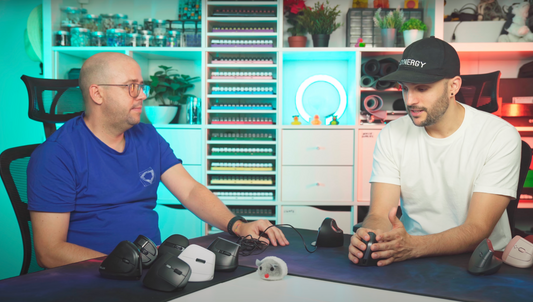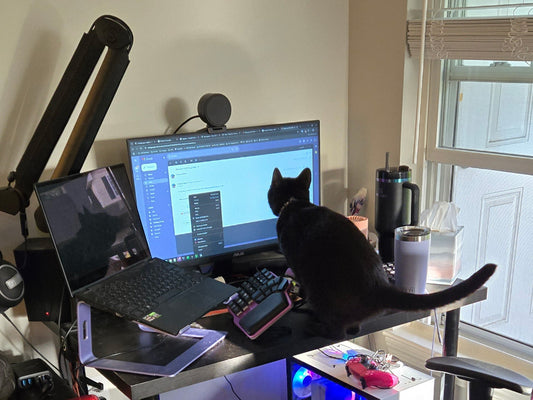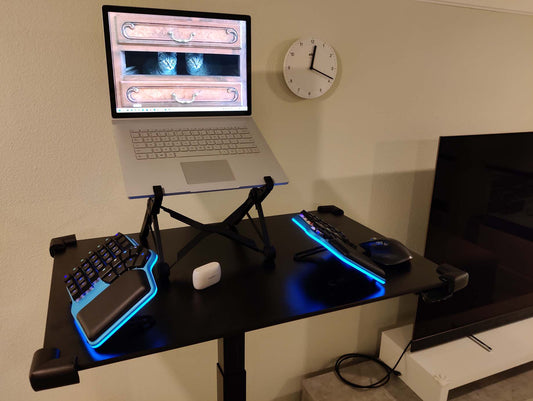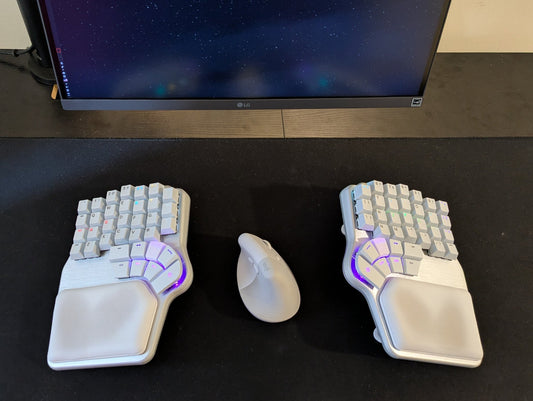Our verdict was clear two years ago: the Logitech MX Vertical and the Logitech Lift were the safest bets for most people.
But the vertical mouse scene has grown dramatically since then, with new models from Razer, Keychron, Trust, and others. We tested them all to find out if anything finally dethrones the reigning champions.
Two Key Factors: Hand Size & Grip
When it comes to vertical mice, choosing the right one often depends on two factors: the size of your hand and how you hold the mouse.
We generally simplify hand size to small, medium, or large. Medium hands, roughly 19 cm from wrist to fingertip, can swing either way depending on grip style.

Your grip style makes just as big a difference.
Palm grip users rest their entire hand on the mouse, moving it from the wrist, elbow, and sometimes the shoulder.

Claw or fingertip grip users keep contact light, holding the mouse mainly with their fingertips for more precise, micro movements.

Remember: depending on your hand size and grip, the same mouse can feel like a perfect fit or an awkward brick. Pinky pinch, thumb rest height, and the curve of the back matter far more than raw DPI numbers for everyday use.
Logitech MX Vertical & Logitech Lift
Logitech MX Vertical
The MX Vertical has been our gold standard for large hands, and for good reason. Its tall, sculpted shape supports the hand in a natural handshake position, and the gentle slope at the front keeps the wrist from bending. The build quality feels premium, with sturdy plastics and a smooth, tactile scroll wheel that’s satisfying to use. The sensor is accurate enough for productivity and even some light gaming.

That said, it’s not without flaws. The clicks are distinctly loud and crisp, which some may find too noisy for quiet environments. The thumb rest, while comfortable, sits just low enough that your thumb may slide down slightly during long sessions. And depending on your desk height, you might experience the infamous “pinky pinch” when moving the mouse — where your pinky brushes or traps against the desk. Still, for large-hand users, few mice balance ergonomics and reliability as well as the MX Vertical.
Logitech Lift
The Lift is essentially the MX Vertical’s friendlier, more compact cousin. It retains the same ergonomic silhouette but refines the grip slightly, making it more comfortable for smaller hands. The clicks are pleasantly quiet compared to the MX Vertical, making it better suited for shared workspaces or calls. Logitech also offers it in multiple colors, which is a nice touch if you care about your setup’s aesthetics.

Like its bigger sibling, the Lift’s thumb rest is positioned a bit lower than ideal, and users with medium-to-large hands might find it too small for all-day use. Still, for small to medium hands, the Lift is an incredibly safe choice that balances comfort, performance, and style at a lower price.
Keychron M5 Wireless Ergonomic Mouse
The Keychron M5 is one of the most interesting newcomers. Right out of the box, the finishing and coating feel fantastic—not sticky, not plasticky, just pleasant to touch. It’s also impressively light for a vertical mouse, and its sensor supports up to 30,000 DPI, making it technically one of the most advanced on the list.

Unfortunately, its usability is compromised by design flaws. The main clicks are extremely loud, louder even than the MX Vertical, and the scroll wheels (both main and thumb) are far too stiff, requiring so much force that you unintentionally lift the mouse. The thumb rest is also too low, which makes the thumb slide downwards rather than resting naturally.
At $70, the same price as the Logitech Lift, the M5 shows promise but doesn’t yet match Logitech in execution. It’s a bold attempt that needs refinement before it can truly compete.
Delux M618 Mini
The Delux M618 Mini is aimed at users with smaller hands. Its compact shape makes it impossible to palm comfortably with medium or large hands, but using a claw grip works surprisingly well for small hands.

The clicks are quiet and pleasant, the coating feels decent, and there’s even a pinky rest to improve stability. At $30, it’s one of the most affordable vertical mice available, and for the right user, it’s a solid choice. The downside is durability—the coating may become sticky over time, so it might not hold up as well as pricier models.
Delux M618C
The Delux M618C is a budget take on the MX Vertical. It copies much of the shape, including its flaws—like pinching the pinky finger and having overly stiff side buttons. While the clicks sound softer than Logitech’s, the build quality feels cheaper, and the coating tends to get sticky after prolonged use.

At around $40, it’s tempting compared to the $120 MX Vertical, but in practice, it doesn’t feel nearly as polished. It’s usable, but not one we’d recommend over other alternatives.
Delux M618XSD Seeker
The Delux M618XSD takes a different approach from its siblings. It adds extra functionality, including a thumb scroll wheel and RGB lighting, and even features a small display to change DPI settings. The pinky recess is well-designed, allowing the finger to tuck comfortably rather than dragging.

But the shape is unusual. The back “butt” of the mouse protrudes too much, pushing the hand backward awkwardly. For a palm grip, it feels uncomfortable. For a claw grip, it’s more manageable, especially for larger hands.
At $40, it offers great value for adventurous users who want something different. But its quirky shape makes it more of a niche option than a safe all-rounder.
Trust Yuno
The Trust Yuno is a simple, no-frills vertical mouse that delivers where it matters. The clicks are quiet, the build quality feels solid for its $40 price point, and the ergonomics are comfortable for most users.

Its only drawback is the thumb rest, which is angled downward and diagonally, forcing the thumb. This can become uncomfortable over long sessions. Still, the Yuno is consistent and reliable compared to other budget models. It’s the best low-cost alternative to Logitech if you don’t want to spend more than $40.
CSL Vertical 305863
The CSL Vertical 305863 has been around for years and is still sold under different brand names. Unlike most vertical mice, its design is thicker and rounder, making it feel more like a natural grip than a rotated traditional mouse.

This shape works beautifully for medium hands, both in palm and claw grip. The thumb rest is comfortable, and the unique placement of extra buttons adds unexpected functionality. Its biggest drawback is noise; the loud clicks may bother office neighbors.
At $40, it remains one of the most comfortable and unique vertical mice for medium hands, especially if you want something different from Logitech’s designs.
Final Thoughts
So, do we have a new king of the hill in 2025? The answer is… not exactly.
The Logitech Lift remains the safest and most balanced choice for small to medium hands, while the Logitech MX Vertical still works well for larger hands despite its age. Among budget options, the Trust Yuno is the most reliable, while the CSL Vertical 305863 offers a surprisingly comfortable alternative with a unique shape.
Other models like the Razer Pro Click V2 Vertical Edition and Keychron M5 are exciting but flawed—great ideas let down by usability issues or size constraints. Delux’s line is more experimental, with some interesting features, but they feel inconsistent compared to Logitech or even Trust.
In short, Logitech is still the best option, but there are now several viable alternatives depending on your budget, hand size, and grip style.
And that's it!
Have you tried any of these mice? Which one is your favorite?





